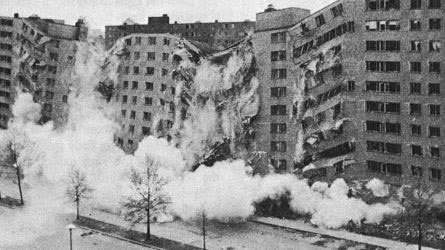Recently, the city council of
Washington, DC voted to drastically cut the proposed budget for the
DC streetcar, from the estimated $1.3 billion that would be needed
for the construction of the basic 22 mile system, to less than half
that, $460 million. This level of funding would only be enough to
support construction of about half the H Street/One City line and a
short segment in Anacostia not connected to the rest of the city, as
opposed to the full One City line, Takoma Park line and the first
line linking downtown with Anacostia.
When the DC Streetcar was first
proposed, it was intended to serve several purposes. First, it was
intended to promote economic development in neighborhoods and
corridors not served by Metrorail, many of which had streetcar
service previously. Second, it was intended to connect neighborhoods
and move people around DC, unlike Metrorail, which was designed to
bring people in and out of Washington as fast as possible. Third, it
was intended to add substantial transit capacity without having to
spend tens of billions of dollars and decades expanding Metrorail.
To the first point, the city council's
actions constitute blatant deception. Much of the economic
development the streetcar was intended to attract has already
occurred, and now it seems that this development will not be getting
the transportation that spurred its construction and that is necessitated for it to live up to the expectations of developers. Not only does this
open the floodgates to lawsuits but it also shows in a very public
way that the DC government cannot keep its promises, even to
developers whose efforts are generally immune from political power
struggles. To this end, it is likely that DC will be left out of
future economic development efforts, as the future of the District's
infrastructure is in doubt and developers cannot guarantee that the
city will support future efforts on a similar scale, or that growth
projections can, in fact, be met.
In addition, the city council's actions
are yet another reason for the residents of the District to lose
faith in their government. The original maps of the streetcar system
show it serving many low income neighborhoods, especially Anacostia.
This transportation service, combined with the economic development
brought by the streetcar and the District's affordable housing and
inclusionary zoning policies offered the best opportunity to date to
create true mixed income neighborhoods that cater to everyone and can
bring about substantial, lasting reductions in crime and poverty. The
city council has completely forsaken this opportunity. One which
would prove valuable to other cities across the country and around
the world.
To the second and third points, as two
short segments of the streetcar system now intended to be the limits
of construction for the foreseeable future, it goes without saying
that the streetcar falls short of its goal of serving as a DC
circulator and extending the reach of pedestrians within the city.
This is a role that Metrorail has been forced to take on, and a role
which that system was not designed for. Building the streetcar in its
entirety can shift intracity trips away from Metrorail, allowing it
to take on additional capacity in the form of radial expansions to
suburbs as originally intended.
In addition, the lack of intra-city
mobility brought about from the scaling back of the streetcar will
only serve to increase the concentrations of wealth and poverty
within DC. Lack of a more permanent, extensive, exclusively within
the district transportation system will mean that wealthy residents
are less likely to spread their spending dollars to other parts of
the city, as accessing them is that much harder. This not only means
that gentrified areas will continue to gentrify as a result of
neighborhoods retaining dollars spent, but that low income areas will
see little, if any, benefit from economic development in other areas
of the city and continue to decline. It also means that there will be
less transit capacity for low income residents who have jobs in other
areas of the city, limiting economic and social opportunities.
One criticism brought against the
streetcar system is that of mismanagement, and it is a very valid
concern. A streetcar system, in various iterations, has been in
construction since the mid 2000s. First in Anacostia, now the current
line on H Street and the larger system after that. The fact that it
has taken this long, and streetcars are not in revenue service, is
unacceptable. It is clear that management and construction of this
system is a bigger bite than DDOT can currently chew. To this end, a
design, build, operate and maintain contract was planned to be put
out that would cover the design and construction costs of the
streetcar system, as well as its operation and maintenance in the
future. This would turn the system over to an organization with
expertise in the construction and operation of streetcar
infrastructure, and significantly lessen the impact that political
fights have over the streetcar system. However, by drastically
reducing the funding available to the streetcar, the assembly of such
a contract is essentially off the table, as the funding required now
cannot be procured. Thus, the decision by the council has ironically
shackled the streetcar system to the poor management of DDOT.
Overall, it seems that the city council
is either unaware of the consequences of their decision, or
malevolent in their actions. The streetcar system as proposed would
address several crucial economic and transportation needs within DC,
doing so in a way that has a great potential to lessen income
equality and provide for all the city's residents, not just the young
and wealthy. This is what it really means for a city to be world
class. Not that it has some fancy amenity, but that it uses its
transportation system, zoning regulations, and economy to do the most
good for the largest number of its residents.




























